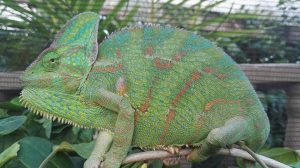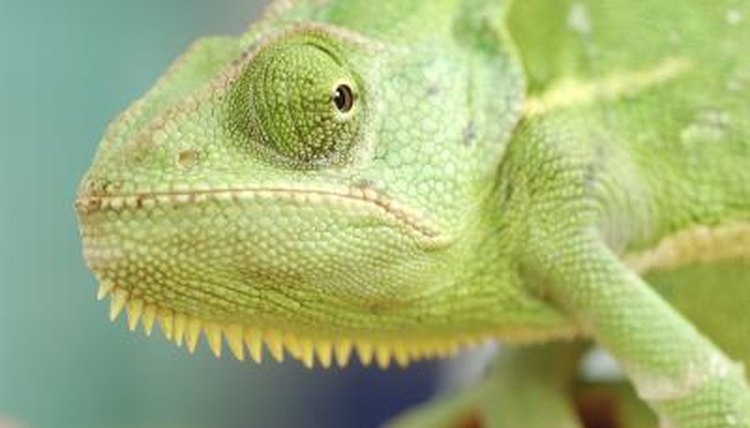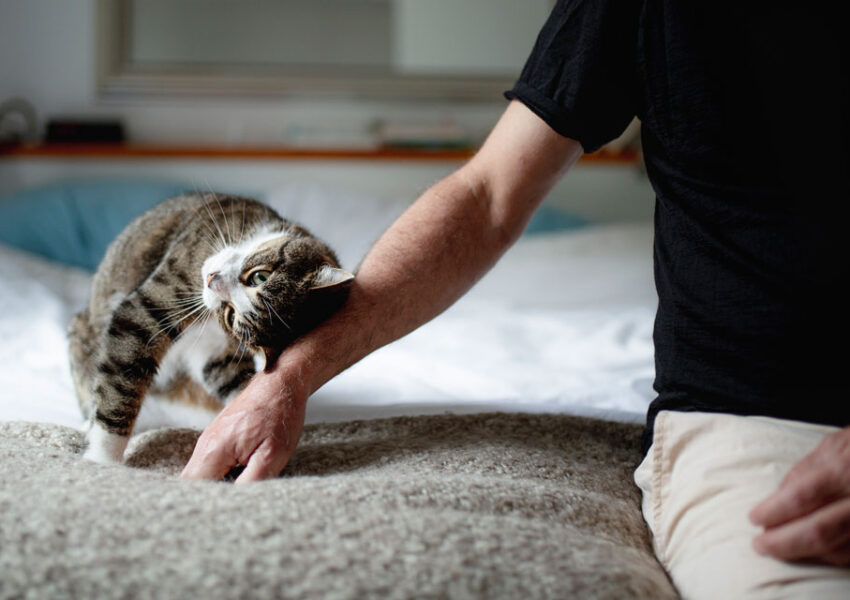Chameleons, best known for their particular ability to change shade, are intriguing reptiles to be able to observe and care regarding. As pets, they can be challenging to handle since of their numerous well being problems. Captive-born chameleons are usually recommended over wild-caught chameleons, who generally have more well being problems. However, all chameleons are susceptible to parasitic organisms, kidney failure, metabolic bone tissue disease, respiratory infections in addition to diseases related to tension. A pet chameleon should go to the veterinarian every half a dozen to twelve months for a new checkup and should have regular fecal and bloodstream tests to check regarding parasites and disease.
Let’s help you get informed about the most common veiled chameleon diseases that may destroy the productivity of your reptile. Usually, the bad conditions of the habitat and wrong food balance are the major causes to blame for having an ill chameleon. But sometimes, chameleons in captivity may suffer an illness despite the care and attention you think you provide. So it is very important to be careful, precise and punctual when it comes to this fragile animal’s care sheet. Below, I will talk about the most common diseases, their symptoms, and how to intervene to prevent the condition from worsening and save your buddy. Note that if your reptile does only get worse despite all the interventions, it is indispensable to consult a veterinary doctor immediately.
Metabolic bone diseases (MBD)
Calcium deficiency is the major cause of metabolic bone disease, it causes defects in the growth and development of the bones. Generally caused by the lack of UVB lights or lack of calcium supplement in the diet. It can also lead to an early death if the reptile is not treated quickly.
Symptoms:
- Early symptoms of this disease are bowed legs, deformed spine, clumsiness, soft bones, rubbery jaws and repetitive fallings from branches. The later symptoms can be seen in a difficulty launching and projecting the tongue to capture insects and droplets of water. Another sign is called anorexia, which is an eating disorder that leads to an extremely loss of body weight. These grave symptoms could ultimately lead to premature death if no actions are immediately taken.
Intervention:
- Create a hospital cage: To reduce the shock of the falling accident, put a soft towel in the bottom of your cage. Better if you could put the cage on its side to eliminate the long height.
- In the case of anorexia, force your chameleon to eat and drink and dust every feeding with Calcium without D3, a multivitamin once a day and also dust with Calcium with D3 once a week.
- In order to process the calcium derived from foods, provide 10 to 12 hours of UVB light every day. If your bulb is older than 6 months make sure you get a new one. Take your chameleon out to enjoy the sunlight every day.
Dehydration
This is a causative factor to some common illnesses, although it is not a disease itself. Lack of constant source of fresh water can lead to various common health conditions like kidney failure.
Symptoms:
- Some of the symptoms of dehydration you need to observe in your pet are dry scaly skin, inactivity, weight loss, weakness. Overlooking these symptoms may lead to an eventual death.
Intervention:
- Make sure your cage is enough misted every day, check if the cage is not overheated. Note that the bottom should always be cooler for the veiled chameleon to cool down sometime. Provide a water dripper for the chameleon to drink from the drops, mist your plants using a clean spray bottle or provide a misting system.
Respiratory Infection
The low temperature in the habitat can lead to respiratory difficulties for chameleons. Which means the environment is not conducive for them to survive.
Symptoms:
- Gaping
- Excessive mucous
- Appetite loss
- Difficulty in breathing
- Inflammation around the mouth and nose
- Stupor
Intervention:
- You can remedy this condition by providing adequate heat and UVB fluorescent lights and ensuring enough exposure to sunlight. Furthermore, check for the level of temperature in the habitat using a thermometer gadget. Ensure that an adequate volume of air flows inside the cage. However, if the symptoms persist after all these measures have been taken, I always advice to consult a veterinarian immediately.
Vitamin A Deficiency
This is one of the essential vitamins needed by chameleons in order to maintain good health and last longer.
Symptoms:
- Some of the signs that can enable you to know when your chameleon is suffering from vitamin A deficiency are shedding problems, teary and crusty eyes, and subsequent lethargy.
Interventions:
- You can help your pet improve on its health condition by providing a strict diet rich in insects gut loaded with a multivitamin and calcium supplements, veggies are also very nutritious every once in a while.
Parasites
The parasites are usually found in the feces of the chameleon. One of the ways that chameleons can contact parasites is by food intake. This is possible if your pet is living in a poor hygienic habitat and especially if it is being fed with wild insects.
Symptoms:
- Poor appetite, Weight loss, Vomiting or regurgitation, Abnormal appearing stools, and Diarrhea.
Intervention:
- A qualified veterinarian should conduct a medical examination in order to detect gastrointestinal parasites and eliminate them. Try to organize fecal tests every year for a check.
Kidney Failure and Gout
A Certain veterinarian prescribed antibiotics cause this health condition. Therefore, you need to exercise caution when you are administering some drugs on your pet chameleon. Other causes are prolonged dehydration and lack of vitamin A in the diet.
Symptoms:
- This disease could be detected in your reptile if you begin to notice symptoms of gout that could cause painful swelling of leg joints, a lump just in front of its pelvis, Constipation, fluid beneath the skin under its jaw or neck, dehydration even with plenty of water offered, a foul odor to its breath, bloodshot eyes, or white shiny deposits in the lining of its mouth.
Intervention:
- keep your chameleon well hydrated by ensuring a humidity level between 50% and 75%. Use a thermometer gauge for that. Install an effective water dripper and a misting system to offer a foggy atmosphere. Assess your chameleon’s water intake daily and adjust the cage environment as needed to keep the air moist but fresh. Gut load the feeders with vitamin A. If your chameleon is badly suffering the best option is to take it to the vet.
Stress
It’s not a serious health condition but if it persists it can jeopardize the immune system of the reptile. There are many possible causes of stress like interactions with human beings especially for a new pet chameleon, poor lighting and heating, small cage, presence of other pets or chameleons around, noise and much traffic around the cage…
Symptoms:
- Chameleon holds or grasps onto the branches, always refuses to come out the cage, maintain a dark color for long periods even when it’s not exposed to the UVB lights, inability to eat very well.
Intervention:
- It’s up to you to locate and remove the causes of the stress, for example; reduce the handling to once a week if your chameleon is young and still exploring his new home, add more hiding spots like plants and branches, remove reflective surfaces that could cause an image of other present chameleon, keep the cage away from traffic and noise..
Tongue Diseases
The tongue is an essential organ that helps the chameleon to eat food and drink water. It could be injured or infected making it difficult for the reptile to gulp down food or slurp water.
Symptoms:
- Loss of appetite, swelling of the tongue, swollen jugular, and the inability for the tongue to extend during feeding.
Intervention:
- Antibiotics are usually needed to treat the problem, Consulting your veterinarian and getting professional help is the best way to remedy this condition.
Mouth infections
It is also a common illness making it difficult for the chameleon to ingest its food very well.
Symptoms:
- Inability to feed, swelling along the gum line, yellow puss, black scabby matter along the gum line or mouth.
Intervention:
- You need to clean the affected area and apply a topical antibiotic, that’s why I recommend consulting a veterinarian that will help you treat this illness.

Tension
Pet chameleons are very easily stressed, with excessive anxiety leading to compromised immune system systems. To reduce anxiety, keep your chameleon within a low-traffic part regarding your home and restrict excessive noise and managing. Chameleons should be held from any other animals, including other chameleons. Don’t let your chameleon notice a reflective surface that may cause him to consider another chameleon is present.
Unlike most captive-born chameleons, wild-caught chameleons can likewise be stressed by becoming kept as pets. For these chameleons, provide a new large and natural-looking surroundings and watch for indicators such as pacing, sleepiness, anorexia and aggression.
Higher Respiratory Infections
Upper breathing infections are common among pet chameleons, and the particular cause is typically ecological. Signs include a gaped mouth, excessive mucus, swallowing or wheezing sounds, and inflammation and bubbling about the mouth and nose area. An upper respiratory infection that’s caught early can be cleared up swiftly. To prevent infections, or perhaps further infections, check regarding proper enclosure temperature in addition to air quality, and remove litter regularly above the bottom of the cage.
Parasites
Dog chameleons can harbor gastrointestinal parasites and should have yearly fecal tests by a veterinarian to verify for them. Parasites could be contracted through food, particularly when hygiene is poor or perhaps if wild insects usually are fed. Wild-caught chameleons typically harbor parasites, even whenever retailers label them because parasite-free. Veterinary testing plus treatment can eliminate parasitic organisms.
Kidney Failure and Gouty arthritis
Kidney failure is a new common cause of loss of life in pet chameleons, often caused by long-term lacks or by certain veterinarian-prescribed antibiotics. Kidney failure could cause gout, resulting in painful swelling of lower-leg joints.
The low-level lacks that can cause kidney disease and other illnesses can be easy to overlook. Appropriate enclosure humidity (between 50 and 75 percent) and a powerful water get system should keep your chameleon appropriately hydrated.
Metabolic Bone Disease
Metabolic bone disease is probably the particular top cause of dog chameleon growth defects and deaths. Chameleons need from least 12 hours associated with UV-B light daily to properly process the calcium which they take in from foods. Unfiltered sunlight is the particular preferred supply of this lighting, but proper indoor lights can be used. Without enough UV-B light, chameleons can produce metabolic bone disease.



